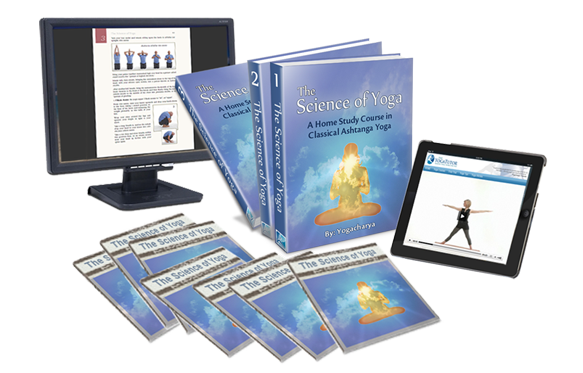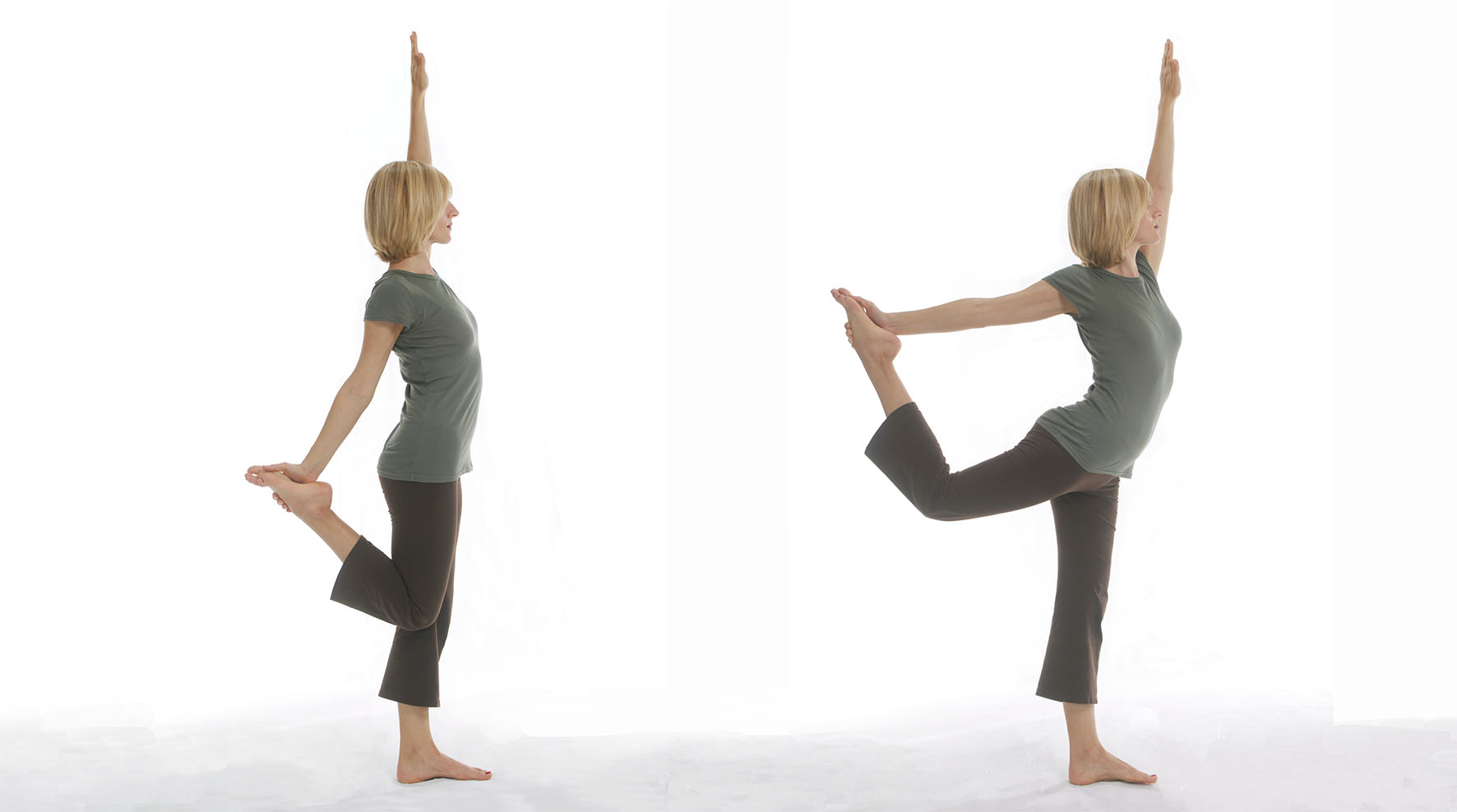[ Excerpt from The Science of Yoga, page 209 ]
The definitive symbol of yoga is the Nataraja, otherwise known as the Dancing Shiva. Nataraj asana is often simply referred to as the "dancer pose," but this translation is insufficient to relay the significance of the term
Among his many representations, Shiva, the Supreme Lord, appears as the King of Dancers. His dance symbolizes the eternal life-death rhythm which continues on in endless cycles, a relentless process of creation and destruction, death and re-birth.
Technique
- From the sama sthiti asana, begin by raising the left arm high overhead, with the palm open and facing forward.
- Flex your right knee, drawing the heel up toward the buttock, balancing now upon the left foot.
- Reach down with your right hand and grasp the inside arch of your right foot, or around the big toe.
Note: This is done by externally rotating the right shoulder so that the elbow points downward and the palm open skyward.
- Now extend your right leg, while at the same time arching your spine and lifting the right foot high into the air.
Note: Keep the head up and eyes fixed forward on a point of concentration.
- Hold this position as steady and long as possible, while maintaining a deep and relaxed breath.
- Slowly reverse out of the pose and repeat on the other side.
Together with Rathacharya Asana
Rathacharya asana and Nataraj asana may also be practiced in succession to one another.
- Begin by performing rathacharya asana on the right side.
- When finished, instead of releasing the right leg down to the floor, continue to draw it behind you into Nataraj asana and hold this position as well.
- Return to sama sthiti asana and then repeat these two poses on the left side.
Effects and Benefits
As with rathacharya asana, the Nataraj asana is a great position for helping on to develop concentration, steadiness, strength and balance. In particular, this pose helps to open up the upper chest and shoulder areas, release tension in the lower back and hips and increase the flexibility of the spine
[Continued...]
DISCLAIMER:
The contents of this web page are intended for informational purposes only. One should not engage in any yoga practices based solely upon the directions given on this web page or any other page of this web site. Anyone atempting to perform any of the yoga exercises introduced on this website assumes full responsibility and does so at their own risk.
---------------------
NOTE: This yoga article is an excerpt from The Science of Yoga, an online yoga training program with streaming yoga videos and 600 pages of step-by-step yoga instruction.

"The Science of Yoga is a course worthy of
leather binding and an honored place in the
finest libraries in the world
... It is indeed a masterful work."
Dr. John Michael Christian
AwakeningWithYoga.com
Learn More About
The Science of Yoga Course
|







